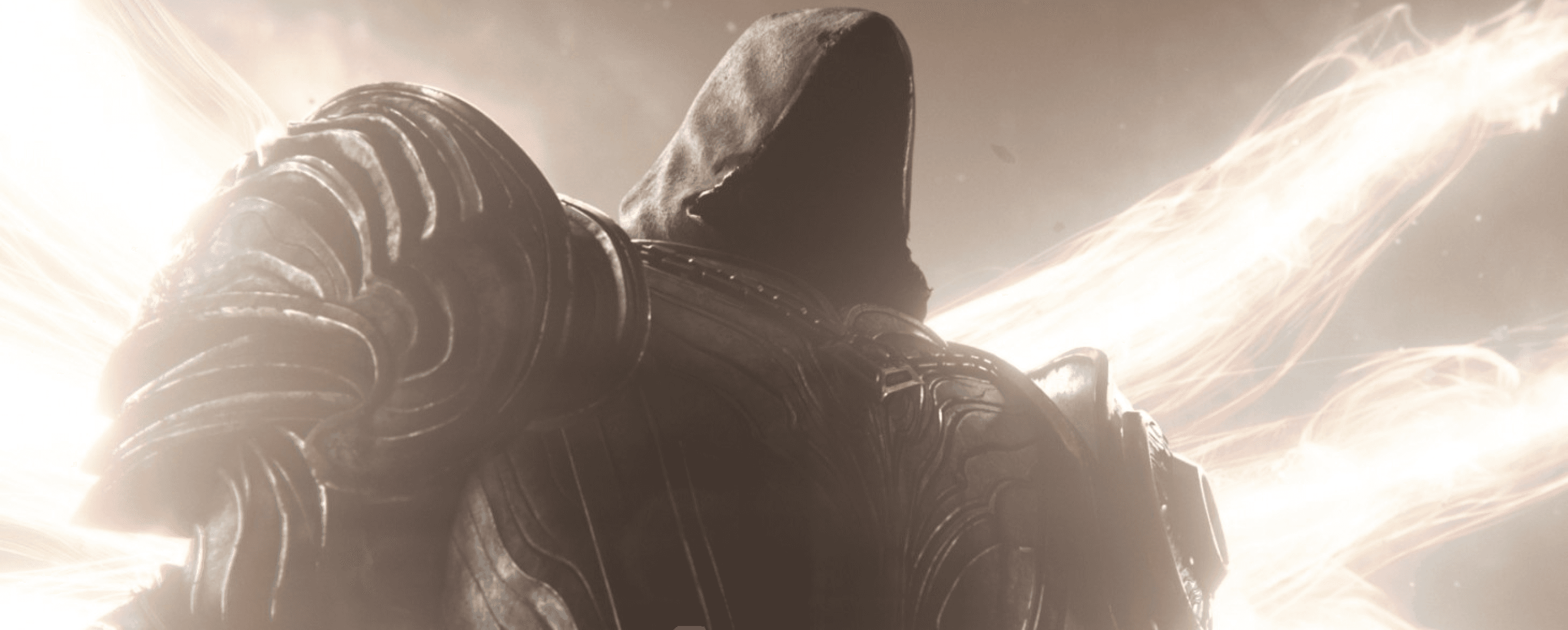
 Christopher R. RiceJun 25, 2023
Christopher R. RiceJun 25, 2023Diablo is a highly popular and influential action role-playing game (ARPG) franchise developed by Blizzard Entertainment. The series is known for its dark fantasy setting, intense combat, addictive loot system, and deep storytelling. The franchise has captivated players since the release of the first game in 1996 and has continued to evolve and expand with subsequent sequels, expansions, and spin-offs. But it’s more than that. It’s… it’s probably one of my favorite non-console games (though that has become an increasingly blurry subject itself). Diablo has been in my video gaming DNA since I played it for the first time in the late 1990s. It was so dark and brooding – it was horror, and I love horror. So with the launch of Diablo 4 in June of this year, I decided (well, I begged my bosses) to write a little bit about the game and how it’s one of the biggest influences on action RPGs in the last two decades or more.
The Basics of Diablo
First, some basics of the franchise: the Diablo series takes place in the fictional world of Sanctuary, a gothic and medieval-inspired realm caught in a cosmic conflict between angels and demons. The central antagonist of the series is Diablo, the Lord of Terror, along with other powerful demons seeking to conquer Sanctuary and unleash chaos upon the mortal realm.
Here's an overview of the main games in the Diablo franchise:
Diablo (1996): The original game introduced players to the town of Tristram, which is under siege by Diablo. Players choose one of three character classes (Warrior, Rogue, or Sorcerer) and embark on a quest to descend into the depths of a labyrinthine dungeon known as the "Cathedral" to confront Diablo and his minions. And Hellfire, of course, though we do not speak of this.
Diablo II (2000): The sequel expanded upon the success of the original, offering an improved gameplay experience, larger world, and deeper narrative. Diablo II takes place years after the events of the first game, when a new host of Diablo emerges. Players choose from five character classes (Amazon, Barbarian, Necromancer, Paladin, or Sorceress) and embark on a quest to stop Diablo and his brothers from corrupting the world.
Diablo II: Lord of Destruction (2001): This expansion pack added a fifth act to Diablo II, introducing more areas, enemies, and a character class called the Assassin. It continued the story from the main game and brought new challenges and powerful loot for players to acquire.
Diablo III (2012): After a long hiatus, Diablo III was released, introducing improved graphics, new gameplay mechanics, and a new generation of heroes. Players choose from six character classes (Barbarian, Crusader, Demon Hunter, Monk, Witch Doctor, or Wizard), and battle the forces of evil as they uncover a new demonic threat to Sanctuary. Diablo III also introduced an online multiplayer component, allowing players to team up and tackle challenges together.
Diablo III: Reaper of Souls (2014): This expansion added the fifth act to Diablo III, featuring the fallen angel Malthael as the main antagonist. It introduced the Crusader class and brought significant changes to the loot system, including the addition of "Loot 2.0," and "Adventure Mode," which provided more replayability and endgame content.
Diablo Immortal (2022): Diablo Immortal takes place between the events of Diablo II: Lord of Destruction and Diablo III. The story revolves around the Worldstone, a powerful artifact that has been shattered, causing rifts between dimensions. Players take on the role of heroes who must confront the demonic forces invading Sanctuary and prevent the Worldstone from falling into the wrong hands.
Diablo 4 (2023): Diablo 4 takes place about 50 years after Diablo 3 and involves the battle between the mother (Lilith) and father (Inarius) of Sanctuary. The game world is huge and they’ve barely covered a 3rd of the available map. I don‘t want to say much more because of spoilers.
Apart from these main titles, the Diablo franchise has also expanded with various spin-offs and adaptations, including books, limited edition figurines, and more. Diablo VI will be released in June 2023, and after two amazing rounds of near-perfect beta-tests, has “gone gold” (industry speak for ready to release).
The Lore
The rich tapestry of the Diablo franchise is expansive and spans a complex narrative involving angels, demons, and the mortal realm of Sanctuary. Here is an overview of the lore:
Creation and the Eternal Conflict
The universe of Diablo was initially created by two cosmic beings: Anu, the embodiment of Order, and Tathamet, the embodiment of Chaos.
Anu and Tathamet clashed in a cataclysmic battle known as the "Eternal Conflict." From the remnants of their battle, the High Heavens (angelic realm) and the Burning Hells (demonic realm) were formed.
Rogue angels and demons used the Worldstone to create Sanctuary as a place where they could hide from their respective sides.
The Prime Evils and the Worldstone
In the Burning Hells, the three Prime Evils emerged: Diablo, the Lord of Terror; Mephisto, the Lord of Hatred; and Baal, the Lord of Destruction.
These Prime Evils sought to corrupt and dominate the mortal realm of Sanctuary.
To protect Sanctuary from the influence of Heaven and Hell, the archangel Tyrael hid the Worldstone deep beneath Mount Arreat.
The Sin War and the Nephalem
The Sin War was a conflict that took place in Sanctuary between angels, demons, and humans.
During this war, a powerful group known as the Nephalem emerged. The Nephalem were the offspring of angels and demons, possessing incredible power.
The angel Inarius and the demon Lilith led opposing factions of Nephalem, causing great turmoil and devastation.
The Dark Exile and the Horadrim
Inarius and Lilith's actions led to the intervention of the High Heavens and the Burning Hells. The forces of Heaven imprisoned the Prime Evils within Soulstones and cast them out of Hell, in an event known as the Dark Exile.
The Horadrim, an order of mages led by the archangel Tyrael, were the ones tasked with hunting down the Prime Evils and imprisoning them within the Soulstones.
The Events of Diablo I
In Diablo, the town of Tristram becomes the focal point of Diablo's awakening. The hero embarks on a quest to descend into the Cathedral and ultimately confront Diablo.
The hero defeats Diablo but plunges deeper into Hell to destroy the Soulstone.
Diablo II and the Prime Evils' Return
Diablo II follows the return of the Prime Evils. Diablo, resurrected, seeks to reunite with his brothers and conquer Sanctuary.
The hero embarks on a quest across Sanctuary, battling the forces of Hell, otherworldly creatures, and corrupted humans to defeat the Prime Evils.
Diablo III and the End of Days
Diablo III depicts the resurrection of Diablo and the unleashing of the forces of Hell upon Sanctuary.
Players confront Diablo and eventually learn of a greater threat, the Prime Evil, where Diablo merges with the essences of his brothers and absorbs the power of the Worldstone shard.
Diablo is defeated, but the High Heavens and the Burning Hells remain locked in conflict.
Diablo IV (upcoming)
Diablo IV is set after the events of Diablo III. Sanctuary faces a new era of darkness, with Lilith, the daughter of Mephisto and Queen of the Succubi, emerging as the major threat.
The game explores many of the regions from the first game, as players delve into the secrets of the ancient conflict between angels and demons.
The Diablo lore is filled with intricate details, character arcs, and a constant struggle between good and evil. It continues to expand with each new installment, building upon the foundations set by the previous games. And this is by no means an exhaustive list of what has happened in the game! It’s not even a primer, really. The world of Diablo is a complex and storied place, full of little details that make the game what it truly is – a masterpiece.
Final Thoughts
The Diablo series is celebrated for its atmospheric graphics; addictive gameplay loop of battling hordes of enemies, collecting loot, and improving character skills; and its compelling storyline and multiplayer experiences. It has left an indelible mark on the action RPG genre and continues to captivate players worldwide. I know it captivates me. I spent close to 90 hours playing in the April beta, and another 24 hours in the second beta in May. I splurged for the ultimate edition copy of the game and a few other treats for myself, and I am looking forward to playing this game that has been so influential in my life as a gamer, writer, and teller of stories. The franchise itself is incredibly tonally even, and though there are some high highs and low lows, they are not parts where things are so unbelievable as to drag you out of the games themselves. Almost three decades in, and it remains a masterclass in how to do a game’s lore right – and how to create a game people actually want and look forward to playing all night with their friends. So go grab a copy, and maybe come back here and tell us what you think when the game launches. And you know, maybe stay a while and listen?

Play on Haptic
Try for free


